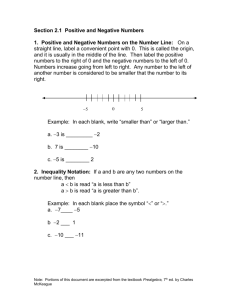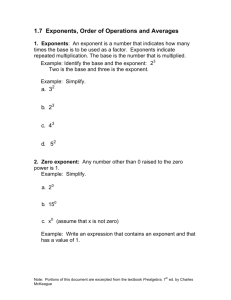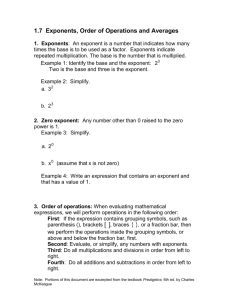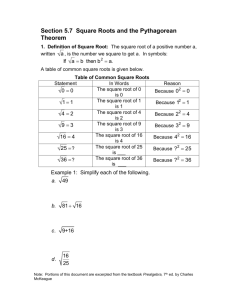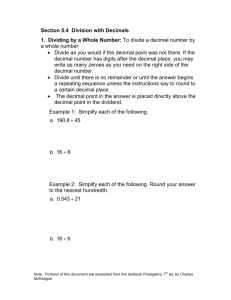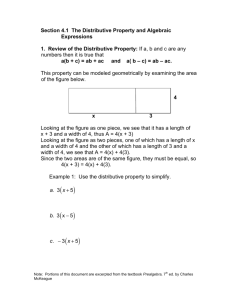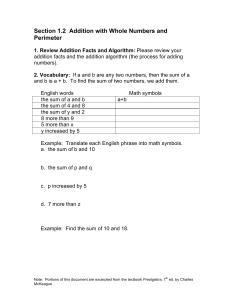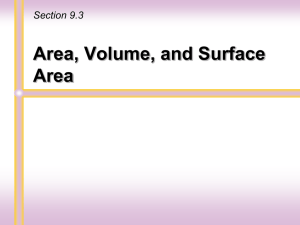Section 2.2 Addition with Negative Numbers 1. Adding on the
advertisement
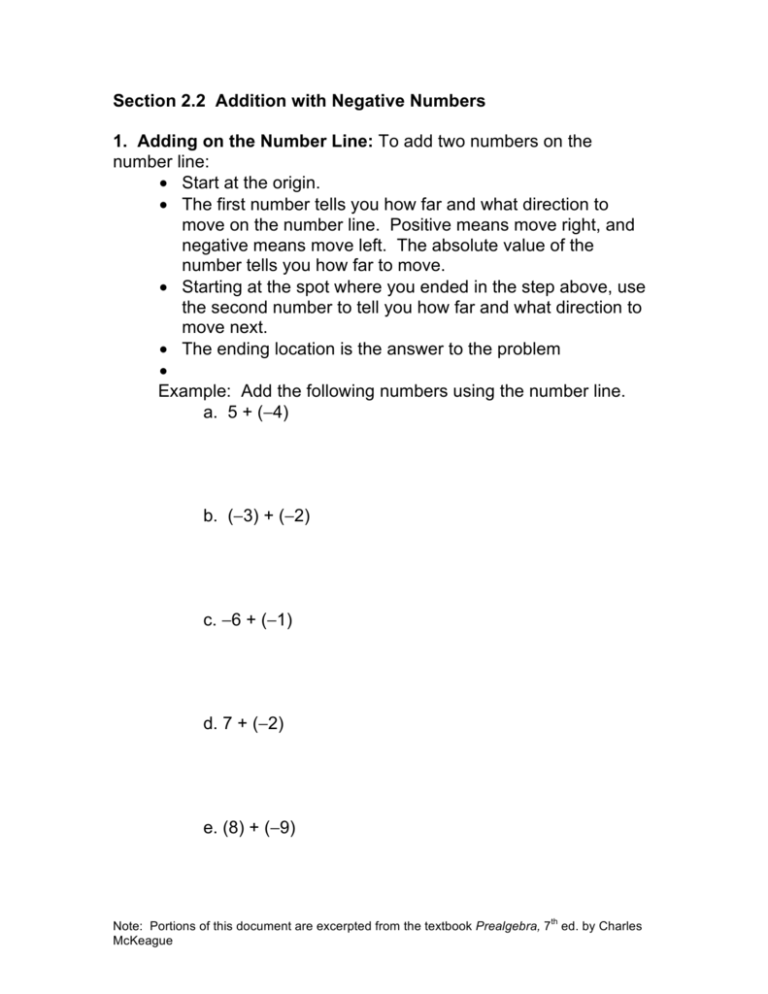
Section 2.2 Addition with Negative Numbers 1. Adding on the Number Line: To add two numbers on the number line: • Start at the origin. • The first number tells you how far and what direction to move on the number line. Positive means move right, and negative means move left. The absolute value of the number tells you how far to move. • Starting at the spot where you ended in the step above, use the second number to tell you how far and what direction to move next. • The ending location is the answer to the problem • Example: Add the following numbers using the number line. a. 5 + (−4) b. (−3) + (−2) c. −6 + (−1) d. 7 + (−2) e. (8) + (−9) th Note: Portions of this document are excerpted from the textbook Prealgebra, 7 ed. by Charles McKeague 2. Rule for Adding Two Numbers with the Same Signs: To add two numbers that have the same sign: • Add their absolute values • Use the common sign. The sum of two positive numbers is a positive number. The sum of two negative numbers is a negative number. Example: Simplify. a. (−6) + (−7) b. (−5) + (−10) c. (−3) + (−9) 3. Rule for Adding Two Numbers with Different Signs: To add two numbers that have different signs: • Subtract the smaller absolute value from the larger absolute value • Use the sign of the number that has the larger absolute value. When you add a positive and a negative number, the sum may be either positive or negative. If the negative number has the larger absolute value, the answer will be negative. If the positive number has the larger absolute value, then the answer will be positive. th Note: Portions of this document are excerpted from the textbook Prealgebra, 7 ed. by Charles McKeague Example: Simplify. a. (−7) + 11 b. (−8) + 5 c. −7 + 15 Example: Fill in the blank with “same signs” if the problem requires adding two numbers that have the same sign or “different signs” if the problem requires adding two numbers that have different signs. a. (−8) + 14 _________________ b. (−7) + (−8) _________________ c. −13 + (−5) _________________ d. −9 + 11 _________________ Example: Simplify a. (−8) + 14 b. (−7) + (−8) c. −13 + (−5) d. −9 + 11 th Note: Portions of this document are excerpted from the textbook Prealgebra, 7 ed. by Charles McKeague
